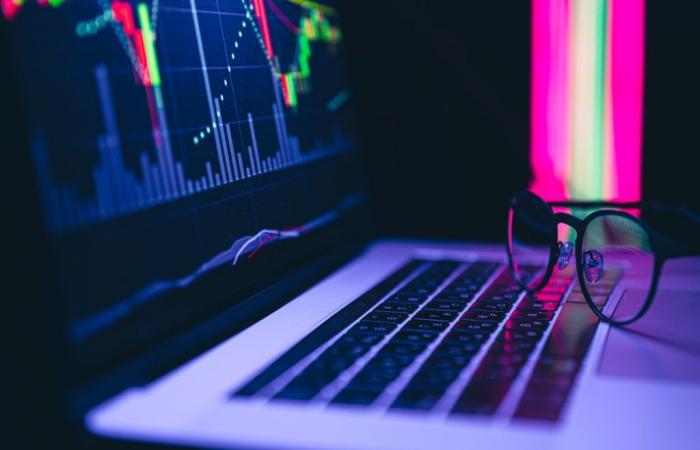
Ibovespa, the main stock index on the Brazilian stock exchange, operates on the rise this Friday (26), with benign data from the IPCA-15 and the improvement in Petrobras shares. The dollar operates in decline.
The Brazilian inflation preview registered a 0.21% increase in prices in April, and accumulated 3.77% in the 12-month window. The numbers came below financial market expectations. Projections were for an increase of 0.29% for April, reaching 3.85% in 12 months.
The Petrobras Board of Directors decided yesterday to approve the distribution of 50% of the state-owned company’s extraordinary dividends. With the measure, the Union, which holds the majority of shares in the company, should receive around R$6 billion. And the government has already agreed to distribute the remainder of the dividends generated in 2023. (see below)
See below for a summary of the markets.
The day before, the North American currency closed up 0.28%, quoted at R$5.1620.
As a result, you accumulate:
- drop of 0.72% in the week;
- increase of 2.93% in the month;
- gain of 6.38% in the year.
At the same time, the Ibovespa operates up 1.38%, at 126,364 points.
The day before, the index fell 0.08%, to 124,646 points.
As a result, it accumulates drops of:
- 0.38% in the week;
- 2.70% in the month;
- 7.11% in the year.
Understand what makes the dollar rise or fall
What’s moving the markets?
Abroad, there were no new stories: investors continued to look for clues about the direction of interest rates in the United States. Rates are between 5.25% and 5.50% per year, and there is great expectation as to when the Fed will begin a cycle of cutting these rates.
The main data was the growth of the US Gross Domestic Product (GDP) in the first quarter of 2024, which was weaker than expected by the market. The annualized rate was 1.6%, much lower than the 3.4% in the fourth quarter of 2023. Against the previous quarter, the economy grew just 0.4% in the first three months of the year.
Analysts expected 2.2% growth from January to Marchaccording to Market Watch consensus.
This was the first estimate from the Department of Commerce, published on Thursday (25). The US publishes its growth at an annualized rate, which compares GDP with that of the previous quarter and then projects the variation for the entire year at the rate of those three months.
Previously, the market expected interest rates to start falling in the first half of this year. However, with data still strong from the American economy – and, especially, inflation not returning to the Fed’s 2% target -, investors already believe that the downward cycle may take longer to begin.
Higher interest rates in the world’s largest economy end up driving investments into the country, which takes money from other markets, especially emerging ones, such as Brazil. In this context, the dollar gains an advantage over the real.
When the numbers came out in the morning, Treasury yields plummeted at first, with the information that GDP grew at an annualized rate of 1.6% in the first quarter — below the 2.4% growth projected by economists consulted by Reuters.
This meant that, in Brazil, the spot dollar also plummeted, reaching a low of 5.1123 reais (-0.72%) at 9:30 am. In the next minute, however, yields jumped into positive territory and began to reach new highs in the session, which made the dollar also gain strength against several currencies, including the real.
Behind the turnaround were bad inflation numbers: core PCE rose 3.7% in the first quarter, above expectations of a 3.4% rise.
“Inflation was very bad, so the dollar reacted and reached 5.19 reais,” Jefferson Rugik, director of Correparti Corretora, commented to Reuters, remembering that the data reinforced the perception that the Federal Reserve tends to promote fewer cuts interest rate in 2024 — which, in theory, favors the US currency.
During the afternoon, however, yields lost strength in the US, as did the US currency against most other currencies, which also placed the dollar at lower levels in Brazil. Investors are now awaiting the release of the monthly PCE index on Friday, the Fed’s preferred data for its monetary policy decisions.
In the domestic scenario, the highlight was the delivery of the first bill to regulate the tax reform on consumption.
The Minister of Finance, Fernando Haddad, took the project personally to Arthur Lira (PP-AL), president of the Chamber. The reform was approved via a proposed amendment to the Constitution (PEC) last year.
This text, from 2023, only brought the general lines of the tax reform. Now, it is necessary to approve the regulations, which will be done via bills.
Among the points to be regulated are the unification of taxes, the products that will make up the basic food basket and the so-called “sin tax”, created to discourage items that are harmful to health and the environment.
Also noteworthy is the decision by Petrobras’ Board of Directors to approve the distribution of 50% of the state-owned company’s extraordinary dividends. With the measure, the Union, which holds the majority of the company’s shares, should receive around R$6 billion.
In total, around R$21.95 billion in extraordinary dividends will be released, out of a total of R$43.5 billion. Payments will be made in two installments: in May and June this year.
In a statement to the market, Petrobras informed that the total remuneration to shareholders for 2023 will be R$94.3 billion. This value includes advance payments approved over the past year and paid until March 2024 (R$58.2 billion) plus the proposal for additional dividends.
Dividends are a portion of the company’s profit that is distributed among shareholders. Extraordinary (or complementary) dividends are those paid in excess of the mandatory minimum. In other words, the company does not necessarily have to pay them.
After this Thursday’s decision, Julia Duailibi’s blog found that Palácio do Planalto also approved the payment of the other 50% of the remaining extraordinary dividends in the second half of this year.
The new perspective caused Petrobras’ preferred shares (without voting rights) to rise more than 2% on the Ibovespa this Thursday. The result meant a gain of R$12.7 billion in market value for the company, whose total value reached R$561.4 billion.
According to a survey by Einar Rivero, founding partner of Elos Ayta Consultoria, the figure is just R$5.5 billion below its historical record, recorded on February 19th, when Petrobras reached R$566.9 billion in market value.
Tags: Ibovespa rises improvement Petrobras IPCA15 dollar falls reaches Economy
--




